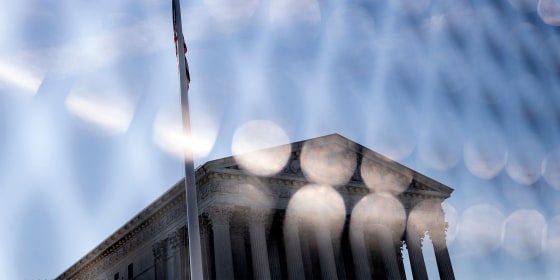Last month, before the Supreme Court announced its Dobbs v. Jackson Women's Health Organization decision overturning Roe v. Wade, the disability rights community celebrated the 23rd anniversary of Olmstead v. L.C. But the anniversary of that ruling comes at a time when my sources within the disability rights community tell me that many disability rights lawyers are ultimately deciding against filing lawsuits, lest they give this Supreme Court the opportunity to set back disability rights.
Disability rights lawyers are deciding against filing lawsuits, lest they give this Supreme Court the opportunity to set back rights.
Matthew Cortland, a disability rights lawyer and senior resident fellow at Data for Progress, confirmed as much in a text message to me last week. He wrote, “I think there’s a fairly widespread understanding among the disability rights bar that the majority of this illegitimate Supreme Court is fundamentally hostile to principles of inclusion, access, and bodily autonomy that animate federal disability civil rights law.”
In what may have been Justice Ruth Bader Ginsburg’s finest hour, she wrote the majority opinion in Olmstead, which found that unjustified segregation of people with disabilities violated the principles of the Americans With Disabilities Act, a ruling that was revolutionary for people with disabilities.
“First, institutional placement of persons who can handle and benefit from community settings perpetuates unwarranted assumptions that persons so isolated are incapable or unworthy of participating in community life,” she wrote. Ginsburg’s opinion was liberating in that it supported people with disabilities living more integrated lives within their communities.
Justice Stephen Breyer retired Thursday, leaving Justice Clarence Thomas as the only current justice who was also on the court when Olmstead was decided, and he wrote the dissent. The same year Olmstead was decided, Justice Antonin Scalia, who joined Thomas in his dissent, employed a young clerk by the name of Amy Coney. Now Amy Coney Barrett, she was successfully nominated by then-President Donald Trump to take the seat left open when Ginsburg died.
The rightward shift in the court that made the Dobbs decision possible, and the fact that the author of the Olmstead dissent has outlasted all the justices who supported it, shows how endangered disability rights are and explains why many people within the community are afraid the ADA is next on the chopping block.
That fear was most evident late last year when the pharmacy chain CVS was set to go before the Supreme Court in a case that could have removed the protections provided by landmark 1990 law. CVS ultimately settled and partnered with disability rights groups, but had the case gone to court, disability rights activists feared that the ADA could have been gutted.
All three of Trump’s nominees are considered especially hostile to disability rights.
In one case, three women filed a lawsuit alleging that the District of Columbia, which cared for them, improperly authorized elective surgeries to be performed on them. When the case reached the U.S. Court of Appeals for the District of Columbia Circuit, where Justice Brett Kavanaugh then served as judge, he ruled in favor of the district.
He wrote in 2007 that “accepting the wishes of patients who lack (and have always lacked) the mental capacity to make medical decisions does not make logical sense and would cause erroneous medical decisions—with harmful or even deadly consequences to intellectually disabled persons.”
When Kavanaugh was facing confirmation for his Supreme Court seat, the Bazelon Center for Mental Health Law said that decision “raises serious concerns about Judge Kavanaugh’s views on the rights and abilities of people with disabilities to determine the course of their own lives.”
All three of Trump’s nominees are considered especially hostile to disability rights.
Justice Neil Gorsuch has also shown a special disdain for disability rights, as was the case in Hwang v. Kansas State University, wherein a professor named Grace Hwang was given six months of paid leave after a cancer diagnosis. Her doctor advised that she take additional leave, but when she requested such, the university refused.
Gorsuch, then a judge for the U.S. Court of Appeals for the 10th Circuit, sided with the university, writing in a 2014 decision: “The Rehabilitation Act seeks to prevent employers from callously denying reasonable accommodations that permit otherwise qualified disabled persons to work—not to turn employers into safety net providers for those who cannot work.”
While it’s understandable that disability rights attorneys don’t want to risk tragedy by filing lawsuits that could lead to awful decisions from this Supreme Court, there’s also a tragedy in their not filing lawsuits. It means many injustices will remain unaddressed. The ADA and disability rights laws as a whole are insufficient, and because those laws aren’t actively enforced, people have to file lawsuits to address suspected violations.
While some smaller and narrower lawsuits will survive, ones that address larger structural challenges will likely go unfiled, meaning an already ableist world will not be forced to change. In that sense, by effectively frightening attorneys out of even filing suits to enforce the ADA, the Supreme Court has disabled people with disabilities even more.

